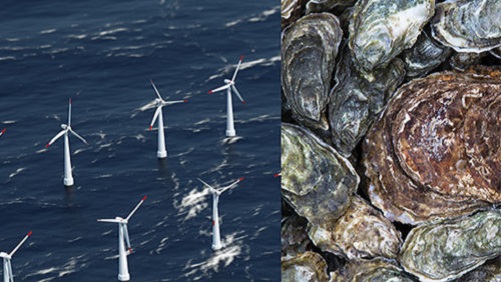Study: Do Floating Wind Farms Spread Invasive Species?

Research begun by the Scottish Association for Marine Science (SAMS) will examine how floating wind farms could provide a new route for invasive species to spread across the oceans.
The movement of marine species from their native territory to other regions where they can have devastating effects on local ecosystems is regarded as one of the greatest threats to ocean biodiversity. Policies to combat the problem have so far focused on preventing the transportation of aquatic or marine organisms in the ballast water or on the hull of cargo ships.
However, SAMS’ Ian Campbell has won the Institute of Marine Engineering, Science & Technology (IMarEST)’s Stanley Gray Fellowship to fund research into the dangers posed by a new generation of floating wind farms as a further vector allowing invasive non-native species to reach new habitats. While conventional offshore wind turbines stand on concrete foundations drilled into the seafloor, floating turbines are mounted on a floating structure that allows the turbine to generate electricity in water depths where bottom-mounted towers are not feasible.
Campbell has chosen Hywind Scotland, the world’s largest such installation, as the focus of his work. Managed by the Norwegian energy company Statoil, Hywind will float 15 miles off Scotland’s east coast by Peterhead. The base of each turbine comprises a floating steel tube containing ballast, which is tethered to the sea bed. He will study the impact of taking the floating turbines from their port of assembly on the Norwegian west coast to its release in Buchan Deep and the near shore habitats on the east coast of Scotland.
The research will evaluate the idea that the new farms represent “a new and unquantified” path for the movement and spread of invasive species.
